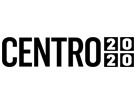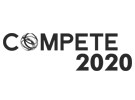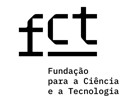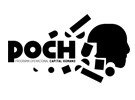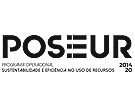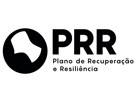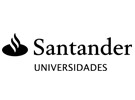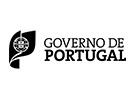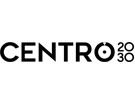



Publication in the Diário da República: Aviso n.º 10753/2023 de 01/06/2023
5 ECTS; 1º Ano, 1º Semestre, 52,50 TP , Cód. 65892.
Lecturer
- Pedro Reis (1)
(1) Docente Responsável
(2) Docente que lecciona
Prerequisites
N/A
Objectives
On completion of this course, students should be able to:
1 - Identify and describe the anatomical structure of the main systems of the human body, including the skeletal, muscular, nervous, cardiovascular, respiratory, digestive, urinary and endocrine systems.
2 - Understand the physiology of the different systems of the human body, analyzing the basic mechanisms that regulate their functions.
3 - Explain the relationship between the various body systems, understanding how they work together to maintain homeostasis.
4 - Distinguish the basic processes of physiological regulation, such as neural and hormonal control mechanisms.
5 - Relate the fundamentals of anatomy and physiology to everyday situations and basic human movement activities.
6 - Apply basic concepts of anatomy and physiology to the interpretation of vital signs and normal body functions.
7 - To have a solid base of knowledge to support more advanced disciplines in the field of sport.
Program
1. General organization of the human body
1.1. Basics of cell physiology
1.1.1. General organization of the eukaryotic cell
1.1.1.1. Nucleus
1.1.1.2. Cytoplasm and cytoplasmic organelles
1.1.2. Plasma membrane
1.1.3. Membrane transport
1.1.3.1. Passive transport
1.1.3.2. Facilitated diffusion
1.1.3.3. Active transport
1.2. Tissue organization
1.2.1. Connective tissue
1. Fundamentals of Anatomy and Physiology
1.1. Structural organization of the human body
1.1.1. Levels of organization of the organism
1.1.2. Characteristics of life and essential physiological processes
1.1.3. Homeostasis and regulatory mechanisms
1.2. Anatomical terminology
1.2.1. Anatomical position and planes of reference
1.2.2. Directional and regional terms
1.2.3. Body cavities and membranes
2. Cellular structures and processes
2.1. Cellular organization
2.1.1. Structure and function of the eukaryotic cell
2.1.2. Cellular organelles and their functions
2.1.3. Plasma membrane and transport of substances
2.1.4. Cellular communication and signaling
2.2. Human tissue
2.2.1. Types and functions of basic tissues
2.2.2. Structure and function of epithelial, connective, muscular, and nervous tissues
3. Support and movement systems
3.1. Skeletal system
3.1.1. Functions and structure of bone tissue
3.1.2. Bone development and growth
3.1.3. Major bones of the axial and appendicular skeleton
3.2. Articular system
3.2.1. Types of joints and functional classification
3.2.2. Structure and function of synovial joints
3.2.3. Joint movements
3.3. Muscular system
3.3.1. Types of muscle tissue and their characteristics
3.3.2. Structure of skeletal muscle
3.3.3. Mechanism of muscle contraction
3.3.4. Types of muscle fibers and energy metabolism
3.3.5. Main muscles of the human body
4. Coordination and Control Systems
4.1. Nervous system
4.1.1. Organization of the central and peripheral nervous system
4.1.2. Neurons, synapses and neurotransmitters
4.1.3. Functions and division of the autonomic nervous system
4.1.4. Sensory integration and motor control
4.2. Endocrine system
4.2.1. General characteristics and functions of the endocrine system
4.2.2. Main glands and hormones
4.2.3. Hormonal regulation and homeostasis
5. Maintenance and regulation systems
5.1. Cardiovascular system
5.1.1. Anatomy and physiology of the heart
5.1.2. Structure and function of blood vessels
5.1.3. Systemic and pulmonary circulation
5.1.4. Regulation of blood pressure and cardiac output
5.2. Respiratory system
5.2.1. Structure and function of the airways
5.2.2. Pulmonary ventilation and respiratory mechanics
5.2.3. Gas exchange and transport of oxygen and carbon dioxide
5.2.4. Regulation of respiration
5.3. Digestive system
5.3.1. Anatomy and function of the gastrointestinal tract
5.3.2. Digestion, absorption and metabolism of nutrients
5.3.3. Regulation of digestive activity
5.4. Urinary system
5.4.1. Structure and function of the kidneys and urinary tract
5.4.2. Urine formation and water-electrolyte balance
5.4.3. Regulation of renal function
Evaluation Methodology
1 - Continuous Evaluation
Assessment procedure characterized by six written tests, one every 2 weeks on the topics covered and the last one on all the topics.
The student is considered to have passed when the final result of the arithmetic average of the first 5 tests (50%) and the last one (50%) is equal to or greater than 9.5 points.
Students must attend at least 2/3 of the scheduled classes.
Students who are unsuccessful in the continuous assessment process may take an exam in subsequent periods, in accordance with the assessment regulations.
2 - Exam assessment
Access to regular and special examination periods is in accordance with the provisions of the assessment regulations in force.
The written and oral exam will assess the student's knowledge of all the syllabus content of the course.
The exam, in either period, consists of a written and oral test.
The student's final grade in the exam will result from the following formula: Final Grade = [(Written Test)+(Oral Test)/2].
The student is considered to have passed the exam if the final grade is equal to or higher than 9.5 points.
Bibliography
- Espanha, M. e Armada da Silva, P. (2019). Sistemas Orgânicos Internos: Anatomofisiologia do Sistema Nervoso Autónomo, Sistema Endócrino e Aparelhos Digestivo, Respiratório, Cardiovascular e Urinário. Lisboa: FMH
- Pezarat Correia , P. e Espanha, M. (2010). Aparelho Locomotor: Anatomofisiologia dos Sistemas Nervoso, Osteoarticular e Muscular. (Vol. 1). Lisboa: FMH
- Pezarat Correia, P. (2016). Aparelho Locomotor: Função Neuromuscular e Adaptações à Atividade Física. (Vol. 2). Lisboa : FMH
- R. Seely, R. e D. Stephens, T. e Tate, P. (2005). Anatomia e fisiologia. Lisboa: Lusodidacta
Teaching Method
The following methods will be used to achieve the specific and general objectives of the course:
Oral presentation of content using audiovisual media.
Observation and interpretation of anatomical models.
Research tasks.
Software used in class
N/A

